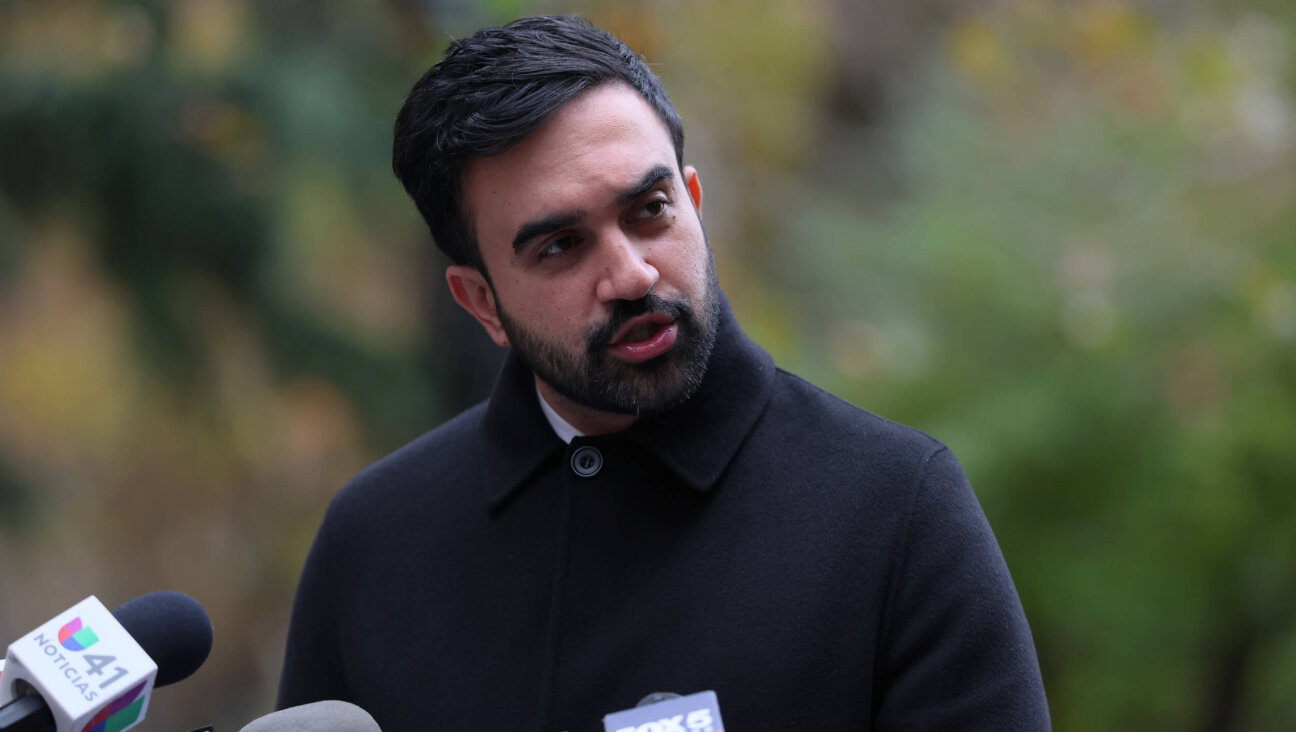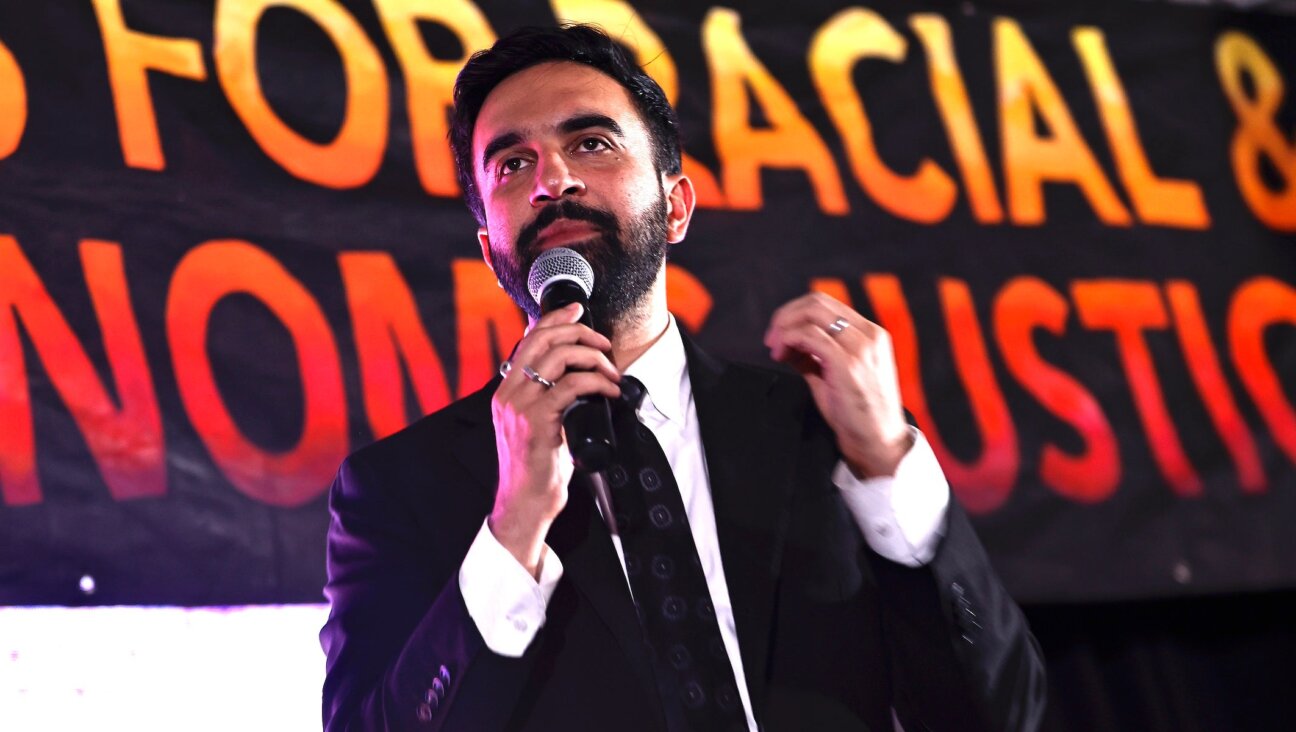The New York Times and its Israel Bias

The New York Times Image by Getty Images
The Israeli-Palestinian conflict is not confined to the battlefield. It is also waged in the media, nowhere more prominently than in The New York Times. In “The Conflict and the Coverage,” a November column she “never wanted to write,” Margaret Sullivan, Times Public Editor, addressed “hundreds of emails from readers on both sides of the Israeli/Palestinian conflict, complaining about Times coverage.” Her verdict: a “strong impression” “that The Times does everything it can to be fair in its coverage and generally succeeds.” She was wrong.
A prime reason is the limited evidence Sullivan considered. “This column,” she wrote, “is restricted to news coverage and does not consider the opinion side offerings.” This ill-advised, self-imposed constraint doomed her effort from the outset. The Times’ “worldview” of the conflict is also revealed in its editorial page, headlines and storylines, and the Op-Ed columns it chooses to run.
During last summer’s war between Israel and Hamas, Times Op-Eds, with rare exceptions, supported the Palestinian narrative: ““Israel’s Puppy, Tony Blair;” “Israel’s Bloody Status Quo;” “How the West Chose War in Gaza;” “Darkness Falls on Gaza;” “Israeli Self-Defense Does Not Permit Killing Civilians;” “Israel Has Overreacted to the Threats it Provoked;” “Zionism and Its Discontents;” “U.S. Should Stop Funding Israel, or Let Others Broker Peace;” “Israel’s Colonialism Must End;” “Unwavering Support of Israel Harms U.S. Interests, Encourages Extremism;” and “Eight Days in Gaza: A Wartime Diary: Life and Death in the Gaza Strip.” This is anything but fair.
Times headlines were likewise revealing. When Hamas broke yet another ceasefire and resumed firing missiles at Israeli civilians, Israel defended itself. The Times declared obtusely, “Hamas Rockets and Israeli Response Break Ceasefire.” Others: “As Israel Hits Mosque and Clinic, Air Campaign’s Risks Come Home;” “Israelis Watch Bombs Drop on Gaza From Front-Row Seats;” “Questions About Tactics and Targets as Civilian Toll Climbs in Israeli Strikes;” “Foreign Correspondents in Israel Complain of Intimidation;” “Israeli Shells are Said to Hit UN School;” “Military Censorship in Israel;” “A Boy at Play in Gaza, a Renewal of War, A Family in Mourning;” “Israel’s Supporters Try to Come to Terms with the Killing of Children in Gaza;” “Israel Braces for War Crimes Inquiries on Gaza;” and “Resisting Nazis, He Saw Need for Israel. Now He Is Its Critic.” In failing to account for these and ignoring their cumulative effect, Sullivan’s assessment is hopelessly flawed.
Sullivan defers meekly to senior editor, Joseph Kahn, on the charge of unbalanced coverage. “I hear that claim a lot” he said, from “people who are very well informed and primed to deconstruct our stories based on their knowledge…The Times does not hear this complaint from readers who are merely trying to understand the situation.” In other words, the lack of complaints of bias by people unequipped to perceive it invalidates criticism by readers who are informed!
Sullivan’s statement, “Even something as seemingly objective as death tolls can become contentious” is naive. Most journalists credulously accepted Hamas’ claims as factual, reporting them without substantiation. Others, fearing reprisal, followed Hamas’ dictate: that all Palestinian casualties be described as “civilians,” teenage combatants as “children,” and every death as Israel’s fault. Again, Sullivan is silent.
She misses the main point of Matti Friedman’s critiques in Tablet and The Atlantic, that “Most reporters in Gaza believe their job is to document violence directed by Israel at Palestinian civilians…The story mandates that they exist as passive victims…The international media’s Israel story is a narrative construct that is largely fiction.” Nonetheless, Sullivan implicitly confirms this by urging The Times to “Strengthen the coverage of the Palestinians.” Perhaps she had in mind an exchange between Times Opinion Page staff editor, Matt Seaton, and a pro-Israel media critic. After Tweeting out a link to a Times Op-Ed by an Arab citizen of Israel accusing it of institutionalized discrimination, Seaton was asked when the paper would report racism among Palestinians. He replied, “soon as they have sovereign state to discriminate with.”
Thus, it comes as no surprise that, as Sullivan laments, many readers mistrust the motives and efforts of Times editors and reporters. But by ignoring editorial misjudgments in framing headlines and stories, Op-Ed publication decisions, and evidence of endemic bias against Israel in the media in general and The Times in particular, her suggestions are modestly helpful at best. Her assertion that The Times needs to do a better job of providing historical and geopolitical context is laudable, as is her suggestion that it should “find ways to be transparent and direct with readers about [its] mission in covering this area.”
The ultimate question is whether The Times will transform its culture, given systemic problems that Sullivan, and senior editors she takes at face value, fail to acknowledge. Her most problematic recommendation is that The Times stop trying to show both sides of each story, creating the impression of “running scared“ or exhibiting “an excess of sensitivity.” Rather, its reporting should reflect “the core value of news judgment.” However, in covering the Israeli-Palestinian conflict poor news judgment is The Times’ essential deficiency.
In her widely praised book, “Buried By The Times,” Northeastern University Professor Laurel Leff excoriated “America’s most important newspaper” for its scandalously negligent coverage of the Holocaust. Max Frankel, Times Executive Editor from 1986 to 1994, called it “the century’s most bitter journalistic failure.” Someday, historians will render a similar judgment on its coverage of the Jewish State and will discern a clear connection between the two colossal miscarriages of justice.
Richard A. Block is Senior Rabbi of The Temple – Tifereth Israel and President of the Central Conference of American Rabbis.















